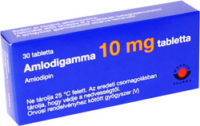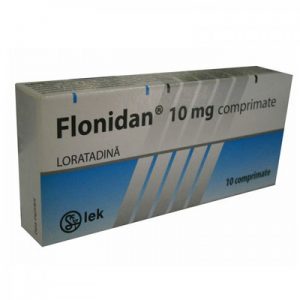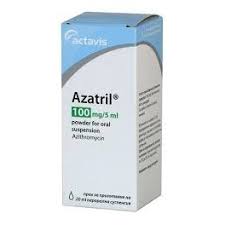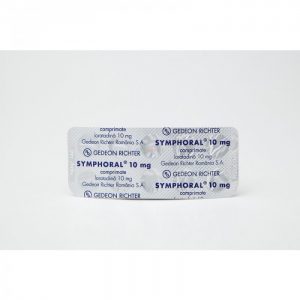Description
AMLODIGAMMA
What is Amlodigamma
Amlodigamma is a medication commonly prescribed to those with high blood pressure. It is also used to treat people whose blood circulation is inefficient and needs improvement. Amlodigamma is a medication that is taken orally and tablets come in either 5mg sizes or 10mg sizes. It works to lower a person’s blood pressure by relaxing the walls of their blood vessels which allows for more efficient blood circulation. Anyone who suffers from certain conditions is advised against taking Amlodigamma and this includes liver and kidney problems. Those with extremely low blood pressure should also avoid this medication. Anyone with an unstable angina is discouraged from taking this medication as well. In addition, it should not be taken by anyone who is allergic to any of the ingredients found in Amlodigamma. Patients on certain types of medication should not take this one as well because an adverse reaction could occur. BUY AMLODIGAMMA 10 MG
The active substance
is amlodipine. Each tablet contains 5 mg or 10 mg (as the besylate amlodipine). Amlodipine belongs to a group of drugs known as calcium channel blockers (calcium antagonists). Calcium channel blockers lower blood pressure by relaxing blood vessel walls. They also affect the heart, so can be used in angina (angina pectoris). Amlodipine is used for: High blood pressure Various types of angina pectoris, unstable angina than Amlodipine may be used to treat angina alone (alone) or with other medicines.
BEFORE YOU USE AMLODIGAMMA
Do not use Amlodigamma – If you are allergic (hypersensitive) to amlodipine to other calcium channel blockers like (so-called dihydropyridine derivatives) or any of the other components of Amlodigamma; – If you have very low blood pressure; – If you suffer from shock (a very severe fall in blood pressure because you become unconscious); – If you have heart failure within 28 days after an acute myocardial infarction; – If blood flow is obstructed cavities left heart; – If you have unstable angina; – If you are unsure if any of the previous situations applies to you, ask your doctor or pharmacist. Take special care with Amlodigamma – If you have heart failure; – If you have kidney disease; – If you have liver disease, amlodipine should be administered with extreme caution because the dose required is not known exactly in this situation.
Taking other medicines
Diltiazem (a drug that treats hypertension and cardiac arrhythmias), concomitant use may increase the effect of amlodipine. Concomitant use of other drugs such as ketoconazole, itraconazole (medicines for fungal infections) and protease inhibitors HIV / AIDS such as ritonavir (a medicine for HIV / AIDS), clarithromycin, erythromycin, telithromycin (antibiotics) and nefazodone (medicine to depression) can cause a stronger effect of amlodipine. Ketoconazole, itraconazole or ritonavir may increase the effect of amlodipine even greater extent than diltiazem. • The effect of amlodipine may be reduced by lowering drugs amlodipine metabolism, such as rifampicin and rifabutin (antibiotics used to treat certain infections), call (preparation for treatment of depression can be obtained without prescription), dexamethasone (cortisone), phenobarbital phenytoin, carbamazepine (medicines to treat epilepsy) and nevirapine (antiviral medicine). • Amlodipine may potentiate the effect of other drugs used to lower blood pressure (such as beta-blockers, ACE inhibitors, alpha-blockers or diuretics). Risk patients (eg those who have recently had a myocardial infarction) the combination of calcium channel blockers with beta-blocker can lead to heart failure, low blood pressure and a (new) heart attack. Please tell your doctor or pharmacist if you are taking or have recently taken any other medicines, including medicines obtained without a prescription. Amlodigamma use with food and drink
Pregnancy and lactation
There is very little information that is detrimental to receive amlodipine during pregnancy. Amlodipine may be used during pregnancy only if the doctor decides that it is absolutely necessary. No information on the use of amlodipine during lactation. Ask your doctor or pharmacist for advice before taking any medicine.
HOW TO USE AMLODIGAMMA
Always Amlodigamma exactly as your doctor has told you. You should check with your doctor or pharmacist if you are unsure. The dose is determined by your doctor. Swallow compimatele much liquid, such as a glass of water. The tablets can be taken before, during or after a meal. If you have kidney problems If you have kidney problems, no adjustment is needed. Amlodipine can not be removed from blood by dialysis (artificial kidney). If you kidney dialysis, amlodipine should be used with additional precautions. If you have liver problems The exact dose required for patients with liver problems has not been determined. If you have liver problems, amlodipine should be used with caution (see also special care with Amlodigamma pct.Aveţi). If you use too much of Amlodigamma If you or someone else has taken too many tablets of amlodipine, contact your doctor or pharmacist. This person should sit down with arms outstretched and legs up (supported by a pair of pillows, for example). Symptoms of overdose are: dizziness, extreme or fainting, shortness of breath, sensation to urinate very often. If you forget to Amlodigamma If you miss a tablet, you can take up to 12 hours from the time you should take it normally. If more than 12 hours from the time that you should take the tablet should not take the missed dose and should take your next tablet at the usual time. Do not take a double dose to make up the missed dose. If you stop taking Amlodigamma The doctor told how long you should take amlodipine. If you stop taking it abruptly, symptoms may recur. Do not stop treatment sooner than you settled without talking to your doctor or pharmacist. If you have any further questions on drug use, ask your doctor or pharmacist. BUY AMLODIGAMMA 10 MG
POSSIBLE SIDE EFFECTS
You should stop treatment and seek medical advice Amlodigamma soon as you notice symptoms of angioedema, such as: swollen face, tongue and throat, difficulty swallowing, hives and difficulty breathing.
Possible side effects are: Very common: swollen joints Common: Headache (especially at initiation of treatment); fatigue, dizziness, weakness Rapid heartbeat (palpitations) Feeling sick, indigestion (dyspepsia), stomach pain Flushing (especially at the beginning tatamentului) Uncommon: sleep disturbances, feeling of irritation, depression malaise, dry mouth, shaking uncontrollably (tremor); unpleasant tingling in the hands and feet (paresthesia), sweating visual ringing or buzzing in the ears (tinnitus) fainting (syncope), increased heartbeat, chest pain, increasing chest pain, especially when initiating treatment, patients with cardiac problems involving coronary artery were isolated reports of heart attack or irregular heart beat including lack heart (premature), increased heart rate or heart rate reduction have been reported, but not clearly demonstrated that they were caused by amlodipine. low blood pressure (hypotension) shortness of breath (dyspnea), inflammation inside the nose runny nose (rhinitis) vomiting, diarrhea, constipation, inflammation of the gums rash, itching, skin rash with itching and spots, hair loss, skin discoloration, redness of the skin as a result of bleeding from the skin by small bleeding vessels muscle cramps, back pain, muscle pain, joint pain increased need to urinate impotence increase in breast size (gynecomastia) increase or decrease in weight Rare: confusion, mood swings, including anxiety taste sensations changes Increased liver enzymes in the blood indicating abnormal liver function, jaundice, inflammation of the liver Very rare: a small number of white blood cells leading to a higher risk of infection (leukopenia), low number of platelets causing bruising (thrombocytopenia) increase blood glucose (hyperglycaemia) numbness, tingling, burning or weakness in hands or feet (peripheral neuropathy) inflammation of blood vessels (vasculitis) cough inflamed stomach lining (gastritis) inflammation of the pancreas with an extreme pain in upper abdomen (the ribs) that radiates to the back (pancreatitis) immediate swelling of skin or mucous membranes (eg throat or tongue) with difficulty breathing and / or itching and rash (angioedema), allergic reactions including itching, flushing immediate appearance (skin rash), angioedema; skin rash with irregular red spots (erythema multiforme), serious allergic reactions with fever, redness, joint pain and / or eye disorders (Stevens Johnson), extreme redness and peeling skin (exfoliative dermatitis) If any side effects gets serious, or if you notice any side effects not listed in this leaflet, please tell your doctor or pharmacist.
HOW TO STORE AMLODIGAMMA
Keep out of reach and sight of children. Do not use after expiry Amlodigamma the box or the blister after EXP. The expiry date refers to the last day of that month. Do not store above 25 ° C. Store in original package to protect from moisture.
In the case of a pregnant patient Amlodigamma should not be taken unless it is prescribed by their doctor. There is no indication as to the effects this medication might have on a woman who is currently producing breast milk.
An overdose of Amlodigamma should be treated by a doctor. When a person has been found to have overdosed on this medication they are advised to sit down, stretch their arms out and prop their legs up. Anyone who overdoses on this medication may experience shortness of breath as well as dizziness, fainting and the feeling of having to urinate frequently.
Someone who is prescribed this medication and misses a dose of it they can take that dose up to 12 hours later. Patients are advised against taking twice the dose they should just because they missed their last dose. Amlodigamma should never be stopped suddenly as this can cause adverse reactions otherwise.
Dangerous side effects can result from taking this medication, including difficulty breathing and/or swallowing, hives and swollen tongues, face or throat. Common side effects of taking this medication include headache, joint swelling, heart palpitations, stomach pain and indigestion. Uncommon side effects of taking it include dry mouth, disturbances in sleep, tinnitus, fainting and tingling in the hands and feet.
Rare side effects of taking Amlodigamma include mood swings, anxiety, confusion, jaundice, liver inflammation and increased enzymes in the liver, which can indicate liver functions that are not normal. Very rare side effects of taking this medication include an increase in a patient’s blood glucose level, an inflamed stomach lining and inflammation of the pancreas.
Amlodigamma should be kept away from children and must be stored at 25 degrees Celsius or less. When stored and taken correctly, this medication can help many patients to control their blood pressure. BUY AMLODIGAMMA 10 MG





Reviews
There are no reviews yet.